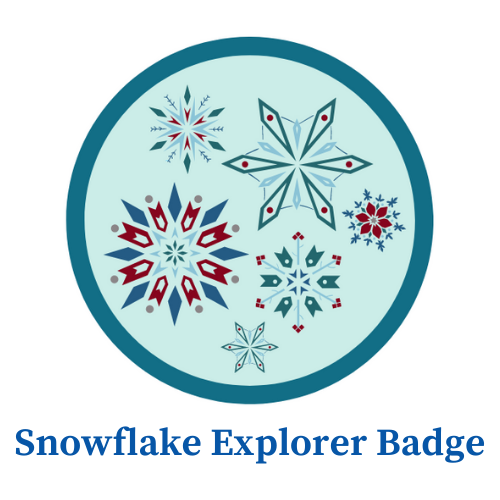
SNOW! It is by far the most magical form of precipitation in my personal opinion. Here in the Triangle we don’t get to see too many of these icy pieces of art, but when we do, there’s nothing else in the world that is quite like it.
Did you know that it is true that every snowflake is unique? You’ll have to learn a little bit of chemistry to understand why, but watch these videos and go outside to investigate yourself the next time it snows.
Not all of these activities require it to actually be snowing, but it sure does make it more fun, so make sure that you don’t miss your chance the next time that it snows to earn your Snowflake Explorer Badge! You must complete one activity from section one and two, and only three if it is snowing to earn your badge.
Section 1-
Watch Wild Kratts: For Pre-K-Kindergarten, find out how snowflakes form in the clouds by watching this short video on Youtube.
Watch Sci-Show Kids: K-2nd, find out how snowflakes are made and discover a few of the shapes that you will need to know to become a true snowflake explorer!
Watch PBS’s The Science of Snowflakes: 3rd-5th, learn about the science that goes into snowflake creation and what conditions make different shapes.
Section 2-
Create a Snowflake- This simple but age old craft can make it feel like winter any time of the year! All you need is paper, scissors, and a little imagination. When using scissors, make sure you have adult permission and supervision.
Make Your Own Frost- In this science experiment, learn about freezing points and melting points of water and ice to be able to make your own frost! What you need for this experiment is ice, salt, water and a metal can. Have an adult help with this one but you can look through your recycling bin to find a can and then you will be on your way to creating your own frost!
Melting Snowman Experiment- Learn about the states of matter, density, and volume in this simple experiment that only needs a clear cup, ice or snow, and a ruler. Melt your snowman (not an actual snowman) to find out how much water it holds!
Instant Water Bottle Freeze– After learning about how ice crystals form and freeze, take a stab at this science experiment that took the internet by storm years back. All you need is a water bottle and a freezer. This activity may take multiple tries to get it to work, but keep trying and you’ll get it! Find instructions and more information here.
Section 3- When it Snows
Snowflake Investigation- So you have learned that all snowflakes have six sides and that no snowflake is the same as another, but did you know that scientists have made a classification system for all of the shapes? The next time it snows, bring a piece of black clothing outside, let snowflakes land on the cloth and use this sheet created by the chemistry group Compound Interest to see how many different types of shapes you can find!


